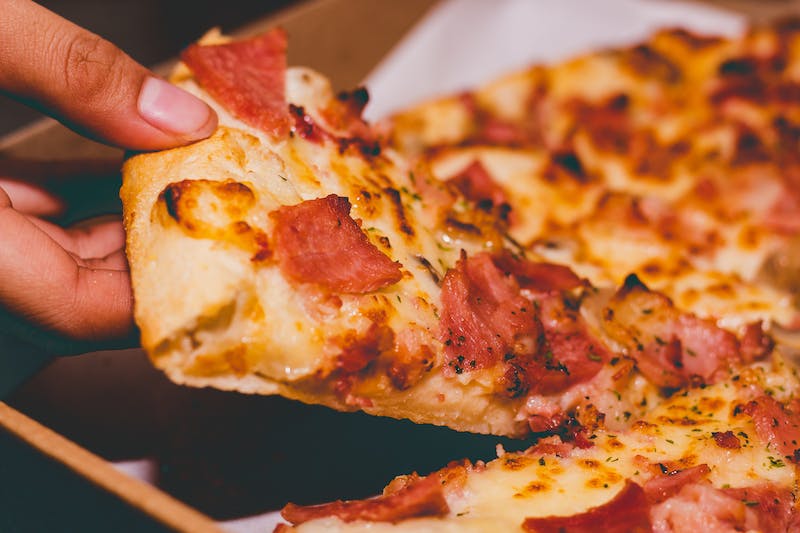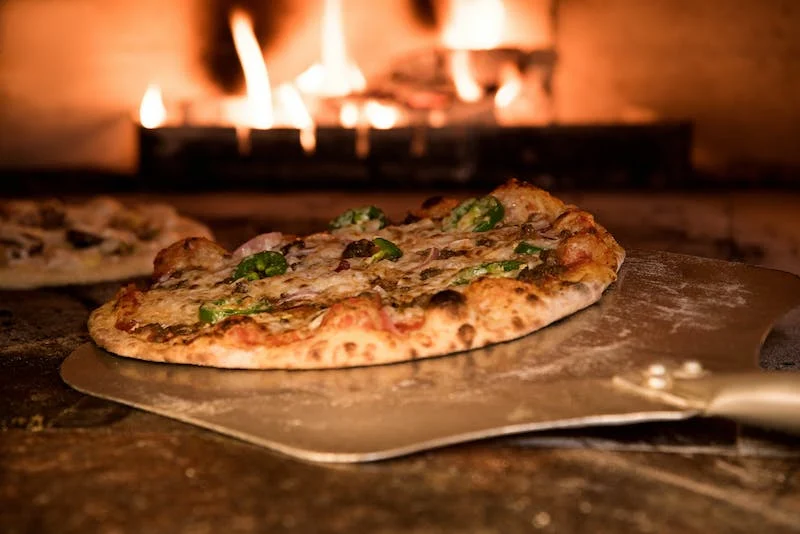In the culinary universe, pizza serves as a canvas of cultural expression, a dish that transcends borders yet embodies the distinctive flavors of its origin. The saga of Italian versus American pizza is a captivating chronicle of tradition, innovation, and culinary craftsmanship. Our exploration within the article titled “Italian Pizza vs American Pizza” embarks on a journey to unravel the nuanced distinctions and passionate celebrations of pizza in Italy and the United States. This piece is not merely a comparison; it is an homage to the artistry and heritage that pizza represents in both lands.
Our article aims to not only highlight the contrasts and similarities between these two pizza paradigms but also to delve into the stories behind them. By exploring the origins, evolution, and signature elements of Italian pizza vs American pizza, we offer readers a comprehensive understanding of how a simple dish can reflect the history, culture, and preferences of a nation. Through expert insights and a celebration of both styles, we invite enthusiasts, foodies, and the curious alike to deepen their appreciation and perhaps challenge their pizza predispositions.
The Historical Journey of Pizza
Pizza has ancient roots. Some form of flatbread with olive oil and toppings existed in the Mediterranean for centuries. But pizza as we know it traces back to Naples, Italy in the late 1700s – early 1800s.
The working poor of Naples needed an affordable, easy meal. The simple, rustic pizza baked quickly in their wood-fired ovens fit the bill. Street vendors sold these early pizzas to locals, who ate them in the streets.
As Italians immigrated to America in the late 1800s, they naturally brought pizza with them. The first U.S. pizzeria opened in New York City in 1905. American GIs stationed in Italy during WWII fell in love with pizza and spread the word stateside.
Pizza solidified its place in American culture in the 1950s and 60s. Chains like Pizza Hut, Domino’s, and Little Caesars made pizza ubiquitous across the country.
Today, pizza is a global phenomenon, with distinctly Italian and American interpretations. Let’s analyze the culinary differences.
Culinary Differences Unveiled: Italian Pizza vs American pizza
Pizza starts with simple ingredients – dough, sauce, cheese. But small tweaks add up to huge divergences between Italian and American pies.
Dough and Crust
In Italy, pizza dough is generally made from fine 00 flour, water, yeast, salt, and olive oil. It ferments for many hours or days, developing complex flavors. The slow rise allows more gluten to form, creating a chewy, elastic base.
American pizza usually utilizes high-gluten bread flour or all-purpose flour mixed with oil or milk, sugar, yeast, and salt. It rises faster, for a softer, thicker, more cake-like crust.
| Italian Pizza Crust | American Pizza Crust |
|---|---|
| 00 Flour | Bread or All-Purpose Flour |
| Long Fermentation | Quick Rise |
| Chewy, Crisp | Soft, Cake-Like |
Sauce and Cheese
Classic Neapolitan pizza uses raw, uncooked tomato sauce, with fresh Roma tomatoes for brightness. Quality extra virgin olive oil and basil complete the taste.
American pizza parlors opt for cooked tomato sauce seasoned with oregano, garlic, onions, and other spices. This warm, richer sauce complements the heftier crust.
Fresh mozzarella is king in Italy, resulting in soft, milky notes. Low-moisture, aged mozzarella dominates U.S. pies for a saltier, stringy bite able to hold up on thick crusts. Grated blends like Parmesan may be added too.
| Italian Pizza Cheese | American Pizza Cheese |
|---|---|
| Fresh Mozzarella | Low-Moisture Mozzarella |
| Soft, Mild | Salty, Stringy |
Toppings
Italians prefer minimal, high-quality toppings like prosciutto, mushrooms, artichokes, and anchovies. These let the fresh dough and cheese shine.
Read on to learn more : How Big Is A 10 Inch Pizza? Understanding the Size
Americans load up their pies with meats like pepperoni, sausage, bacon and ham plus vegetables, black olives, and extra cheese.
There are regional variations too. Chicago has deep-dish. New York does huge, foldable slices. California adds inventive toppings like barbecue chicken. But the American style overall favors hearty portions and bold flavors.
Cooking Techniques: Wood-Fired vs. Commercial Ovens
All pizza tastes better hot from a fiery oven. But oven type plays a key role in the end product.
Italians traditionally use wood-burning ovens reaching 900°F. The intense heat cooks the thin pies in minutes. It gives the crust a smoky char while keeping the toppings fresh.
Most American pizzerias use gas-fired commercial deck ovens between 500 – 600°F. The lower temperature accommodates a thicker crust. But it lacks the complexity of wood fire.
Home ovens (375 – 450°F) simply can’t replicate pizzeria conditions. So firing up the grill or investing in an outdoor oven is recommended for homemade pizza pursuits.
Consumer Preferences and Perceptions
Italians treat pizza as an everyday street food, not fast food. Sit-down pizzerias focus on high-quality ingredients and preparation, not quick service. But a hot slice from the neighborhood takeaway spot or bakery still hits the spot.
Americans view pizza as an affordable, convenient option for feeding the family or gathering friends. Pizza chains market deals, speedy delivery, party packages, and ready-to-heat convenience.
Their perceptions influence consumption habits. Italians savor 1-2 thin slices with a fork and knife. Americans grab a large pie to share straight from the box at home or dive into thick, foldable slices on the go.
Both cultures have adopted aspects of each other’s pizza styles over time. But local preferences still dominate based on tradition, convenience, economics, and media portrayals.
The Economic Impact of the Pizza Industry

Pizza is big business in Italy and the United States. Let’s crunch the numbers.
- Over 5 billion pizzas are sold in America per year
- Americans eat 350 slices of pizza per second
- Italy has over 63,000 pizzerias, employing over 200,000 people
- Italians eat approximately 8 kg (18 pounds) of pizza per person annually
Pizza restaurant sales in 2020:
| Country | Sales |
|---|---|
| United States | $47 billion |
| Italy | $22 billion |
In both countries, independent pizzerias co-exist with mega chains like Pizza Hut, Domino’s, and Papa John’s. Tradition still matters. According to PMQ’s Pizza Magazine, 56% of Americans prefer to get their pies from a local, non-chain pizzeria.
Pizza’s versatility supports both dine-in and takeaway. Delivery really drove U.S. pizza consumption during the COVID-19 pandemic, when delivery sales increased over 25% in 2020.
As a staple food with mass appeal across income levels, pizza continues to thrive economically in Italy and America. $1 slice deals compete with gourmet $40+ pies artfully crafted by celebrity chefs. Pizza has something for everyone.
Health and Dietary Considerations
Pizza seemed innocuous as an occasional treat, but its frequent appearance in the modern diet requires a nutrition comparison.
Read on to learn more : What Is Marinara Pizza Sauce? Sauce Perfect for Pizza
A slice of basic cheese pizza has around 215 calories. Add toppings and bigger sizes, and it can quickly top 500 calories per slice.
The benefits of lycopene in tomato sauce and protein from cheese are outweighed by high sodium, carbs, and saturated fat as a regular meal choice.
Increasing health consciousness led to lighter, veggie-loaded options. Cauliflower, broccoli, chickpea, or butternut squash are popular gluten-free pizza crust bases.
For vegan pizzas, follow an Italian marinara style with no cheese. Use plant-based meats like Impossible sausage or Beyond pepperoni for American-style vegan pies.
Still, standards like pepperoni remain pizza’s top seller, and overall consumption continues to rise. Moderation remains key to keep pizza as an enjoyable indulgence.
Pizza and Technology: Innovations in Preparation and Delivery
Traditional Italian pizzerias still hand make dough and source local ingredients. But many expanded online ordering and delivery options during the pandemic. They tap into modern marketing via social media and review sites too. Technology aids the business, not the process.
America fully embraces tech-infused pizza. Chains like Domino’s and Pizza Hut allow ordering through apps, websites, smart speakers, and even tweets. Their operations utilize conveyor ovens, automated phone systems, routing algorithms for delivery drivers, and more. Domino’s drone delivery plans are in development too.
3D food printers offer a sci-fi future for pizza customization. Natural language interfaces like Alexa could take voice orders for fully personalized pies someday. But for now, simpler systems like QR code contactless ordering and payment aid shops of all sizes.
The Pandemic’s Impact on Pizza Consumption

COVID-19 shutdowns shocked local pizzerias. But pizza ultimately emerged as the pandemic’s comfort food MVP.
- Online pizza sales in the U.S. increased over 100% in March and April 2020.
- 18% of Americans reported making homemade pizza during quarantine.
- Pizza delivery orders rose by double digits as restaurants closed and families avoided grocery stores.
Increased demand allowed big chains to hire more staff and raise wages. Local favorites relied on loyalty and convenience to survive dine-in closures. Pizza sustained Italy and America in an unexpected way.
Seasonal and Limited Edition Pizzas
Italy’s seasonal produce makes its way onto pizzas for a limited time. Spring welcomes asparagus and artichokes. Zucchini blossoms shine in summer. Butternut squash jazzes up an autumn pie.
U.S. chains create buzz with specialties too. Pizza Hut’s annual Big New Yorker imitates a stacked New York slice. Papa John’s unveils a new Super Hawaiian each winter.
Local pizzerias craft unique monthly or weekly specials to draw in customers. Social media aids promotion of photogenic creations. Limited availability pressures fans to order before they’re gone until next year.
These special event pizzas keep things interesting for regulars. They attract new diners drawn to novel ingredients or epic collaboration hype as well. Limited editions are an economic and marketing win.
Conclusion: Italian Pizza vs American Pizza
Pizza holds a sacred place in Italian and American cuisine. But it’s so much more than bread, cheese, and sauce. This cheesy dish connects us across generations and cultures. Pizza adapts with the times while providing nostalgia and comfort. Italy treats pizza as an artisan tradition. America views it as an indulgent staple. As pizza continues to evolve, perhaps these styles will merge into something new entirely.
The beauty of pizza lies in its versatility. Sweet or savory, thin or deep, meaty or veggie, pizza reflects local tastes and ingenuity. Each bite contains centuries of cultural identity. So next time you grab a slice, appreciate all the history, craft, and joy layered into this beloved food. Pizza brings the world together one topping at a time.

Chef John Sebastian has been cooking up a storm at his simple place for years. Offering a variety of international foods, Chef John Sebastian has something for everyone- and he makes it all look easy!
He’s been featured in various food magazines and cooking shows, and his restaurant has become a local favorite in the community. When he’s not in the kitchen, Chef John Sebastian enjoys spending time with his family.









